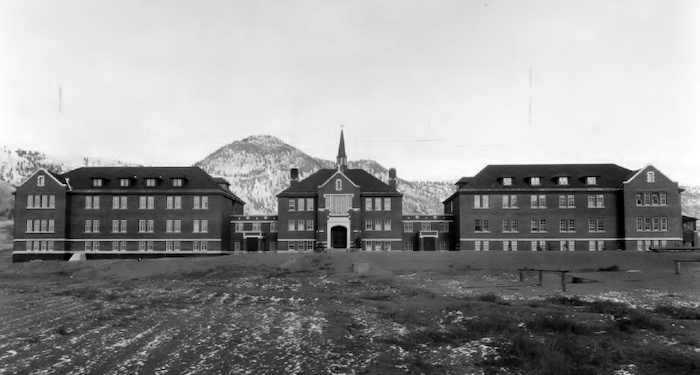
Books About Indian Residential Schools In Canada: Nonfiction and Fiction
Content warning: this post discusses some of the atrocities of Indian Residential Schools, including physical, emotional, and sexual abuse.
In May 2021, the remains of 215 children were found at the former residential school in Kamloops. This is a devastating discovery, although the reason this has come to light is because of the Tk’emlúps te Secwépemc community’s long fight to not have these children forgotten. As horrific as that number is, this is only one unmarked gravesite. There have already been 104 more potential graves located at a Manitoba residential school. Every former residential school in Canada needs to be searched, because it was not uncommon to have unmarked graves on the grounds of these schools.
It is hard to overstate the pain and damage Canada’s long history of residential schools has done — in fact, even the word “history” is misleading, since it is only very recently that this practice has stopped, and generations of survivors are still alive. From the late 1800s, and only officially ending in 1996 with the last residential school closure, children were taken from their homes and robbed of their family and culture. Physical and sexual abuse was common. They were used as free labour: the Kamloops residential school in question used half days, and the other half of the day children were made to work, often in agriculture.
The mortality rates in these schools were incredibly high. Although these numbers were not consistently reported, it’s estimated between 30 and 60% of children died within five years of attending residential schools. It was an act of genocide, one meant to permanently erase Indigenous identity and culture. This had far-reaching consequences for survivors and their families, who deal with intergenerational trauma. These communities also demonstrate incredible resilience and healing: after generations of attempted genocide from the Canadian government, Indigenous culture continues to be passed down, and even languages thought lost or that only had a handful of speakers are seeing revitalization.
In this post, I’ve included some history books, memoirs, novels, and poetry collections about residential schools. I want to preface this by saying that I am not an expert and I am not Indigenous. The best way to make sure you are being respectful and getting accurate information is to make connections with your local Indigenous nations. I also invite you to find an Indigenous-owned bookstore to order these from. I’m a personal fan of Iron Dog Books, but here is a list of more across the U.S. and Canada.
History Books
Truth and Reconciliation Commission Reports
This is the most important item on this list. It is the report that came out of Canada’s Truth and Reconciliation Commission’s six year investigation of Indian residential schools in Canada, released in 2015. All of the volumes are available for free as PDFs. The TRC heard thousands of testimonies about the abuse survivors suffered in residential schools. This report provides a history of these institutions and their continuing legacy. This report includes 94 calls to action the government must do to attempt reconciliation. In the six years since they’ve been released, only eight have been completed.
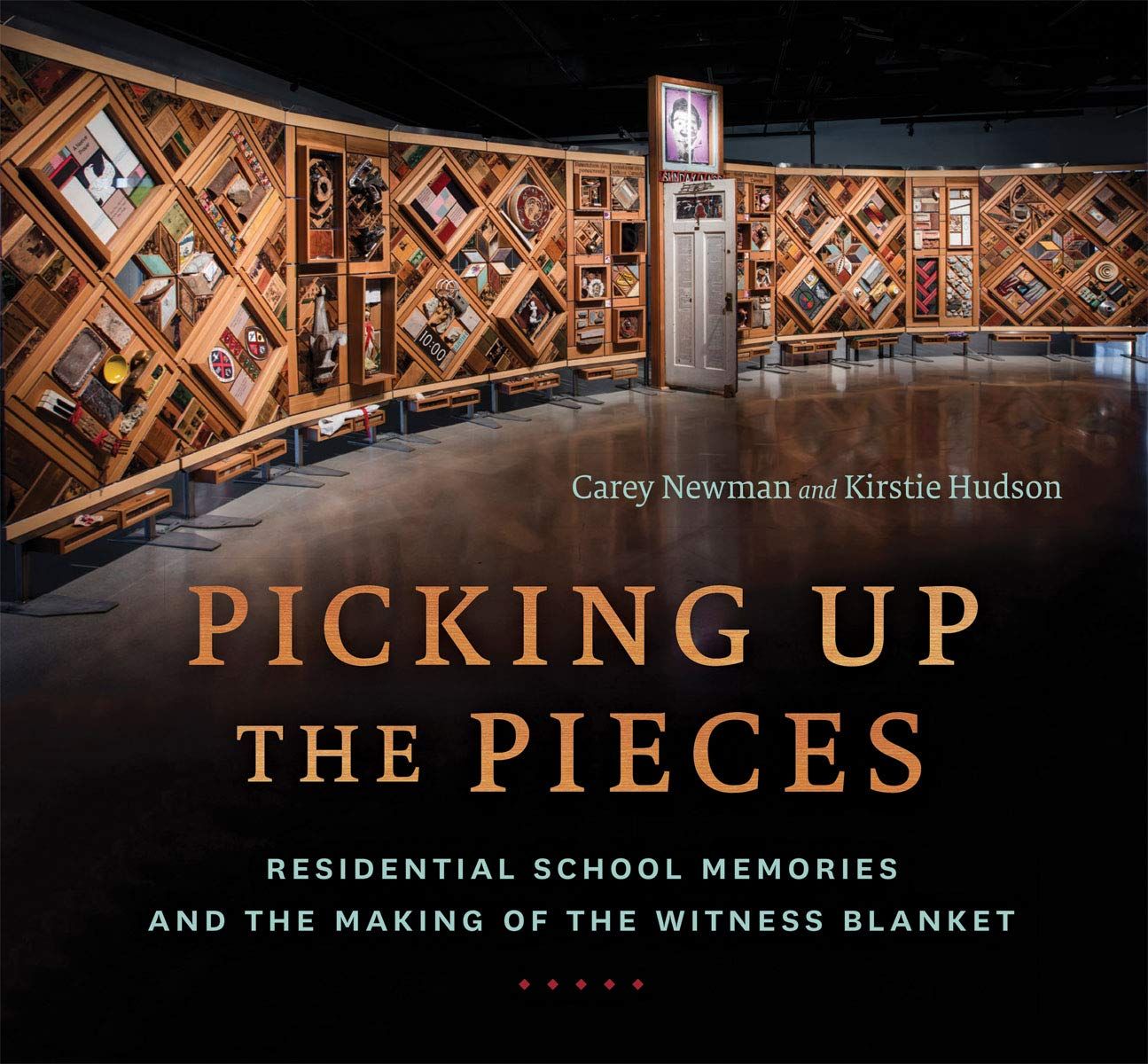
Picking Up the Pieces: Residential School Memories and the Making of the Witness Blanket by Carey Newman and Kirstie Hudson
This is an art book accompanying a documentary of the same name. They describe the making of The Witness Blanket, an incredible piece of art that acts as a monument to those who went through residential schools, including Carey Newman’s father. The artist travelled across the country, and survivors and their families contributed objects from their lives (photos, an ice skate, a brick from a former residential school) and their stories. You can look at and interact with the blanket online, and I highly recommend watching the documentary as well.
Behind Closed Doors: Stories from the Kamloops Indian Residential School by A.S. Jack
It’s the Kamloops Indian Residential School’s mass grave discovery that brought residential schools into the news recently. These are the stories of 32 survivors who went to that school. This is not a bird’s eye view of these institutions, but instead journal-style entries of their experiences, including abuse. The stories are organized into Coping, Resistance, Survival, and Healing, and it includes photographs.
Kill the Indian, Save the Man: The Genocidal Impact of American Indian Residential Schools by Ward Churchill
This history book covers both the United States and Canada’s use of residential schools as a strategy for colonization and the assimilation of Indigenous peoples. it follows the five generations of children taken from their families and communities, and then shows how the effects of these policies continue today. The title comes from the justification of Carlisle’s Indian School from its founder, Capt. Richard H. Pratt.
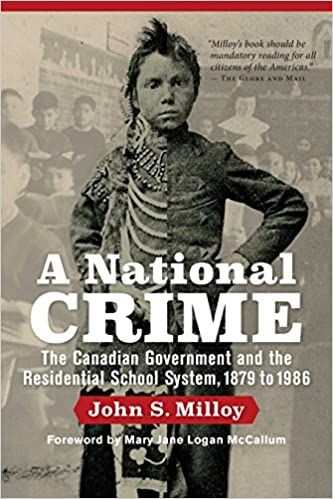
A National Crime: The Canadian Government and the Residential School System, 1879 to 1996 by John S. Milloy
Originally published in 1999, this history of residential schools used previously unreleased government documents to show the progression of the ideology behind this genocidal act. It documents the generations of abuse and mistreatment of Indigenous children through internal communications, including the 1948 Indian Affairs Superintendent admitting that “if I were appointed by the Dominion Government for the express purpose of spreading tuberculosis, there is nothing finer in existence that the average Indian residential school.”
Note: This is not written by an Indigenous author.
Seven Fallen Feathers by Tanya Talaga
The children Seven Fallen Feathers focuses on didn’t go to residential schools, but they experienced the deadly aftermath of these policies. It follows the stories of seven Indigenous teenagers who died between 2000 and 2011 in Thunder Bay, Ontario, forced to go to school far from their communities. Talaga explores how although residential schools are no longer open, those policies can still be seen in how Indigenous students are treated (and mistreated) in the educational system today.
Unsettling the Settler Within: Indian Residential Schools, Truth Telling, and Reconciliation in Canada by Paulette Regan
This title is specifically aimed at non-Indigenous Canadians to recognize the country’s foundation of racism and genocide and how non-Indigenous Canadian participate in it. It challenges the romanticization of Canada as peacemakers, outlining the steps that non-Indigenous Canadian must take towards reconciliation, especially as a result of the damage done by Canada’s residential schools. The author is the director of research for the Truth and Reconciliation Commission of Canada.
Note: This is not written by an Indigenous author.
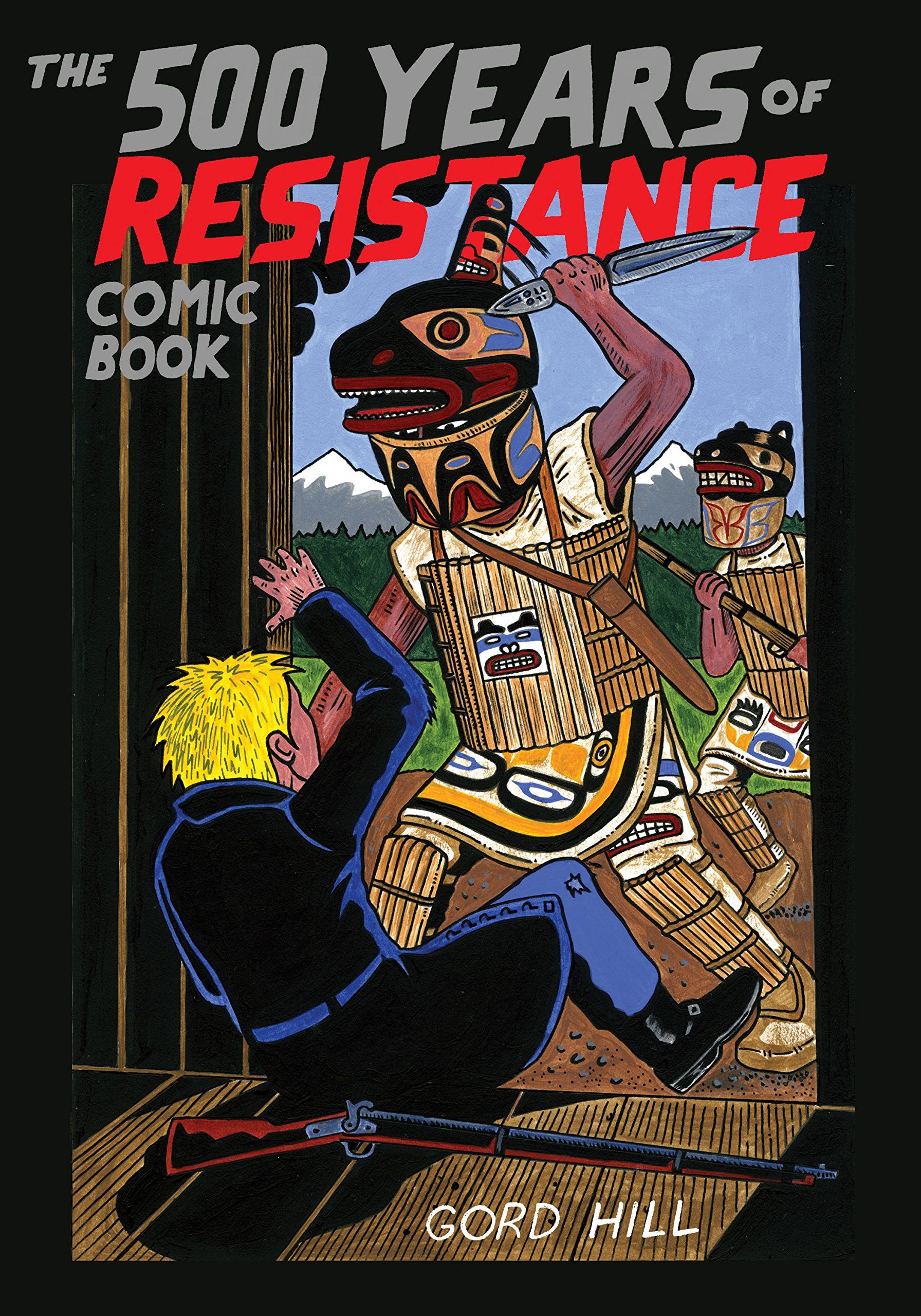
The 500 Years of Resistance Comic Book by Gord Hill
This one isn’t specifically focused on residential schools, but instead looks at the entire history of Indigenous resistance to colonialism, from the 1600s up to the present. It’s important when learning about residential schools and colonialism to remember that there has always been Indigenous resistance. Excitingly, this is getting a revised and updated version in full colour that comes out October 2021!
They Came for the Children by The Truth and Reconciliation Commission of Canada
I also wanted to include a few resources aimed specifically at teachers in order to provide resources to teach about residential schools, including their continuing legacy. They Came for the Children by The Truth and Reconciliation Commission of Canada is available as a free PDF. Stolen Lives: The Indigenous People of Canada and the Indian Residential Schools by Facing History and Ourselves is also available as a free PDF. A title that is more difficult to find, but will be useful for high school teachers, is Moving Forward: A Collection About Truth and Reconciliation, which contains artwork and poetry about residential schools by Indigenous artists across Canada.
Memoirs Dealing With Residential Schools
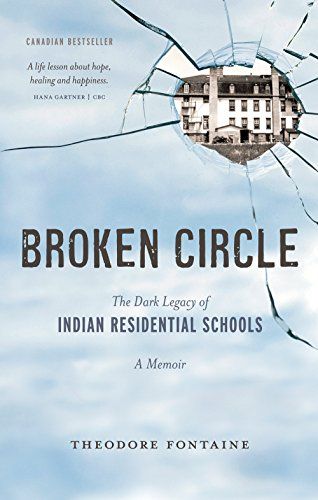
Broken Circle: The Dark Legacy of Indian Residential Schools: A Memoir by Theodore Fontaine
In this memoir, Fontaine describes the 12 long years he spent at a residential school, separated from his family and community, as well as the post-traumatic stress disorder caused by the psychological, emotional, and sexual abuse. This story is his journey of healing, after the abuse suffered and the loss of his family, culture, and community left him angry and self-destructive as a young man. He also discusses how even in terrible conditions, some children developed Stockholm Syndrome for their “keepers,” buying into their narrative of being “saviours” — and the unlearning he had to do to become the person he is today.
They Called Me Number One: Secrets and Survival at an Indian Residential School by Bev Sellars
In this memoir, Sellars tells the story of three generations of women — her grandmother, her mother, and herself — who attended St. Joseph’s Mission at Williams Lake, British Columbia. This includes her experience with hunger, physical abuse, and forced labour as a child. St. Joseph’s Mission was well-known for Bishop Hubert O’Connor’s sexual abuse, which took place during Sellars’s time there. After the school was closed, survivors of the program came from the surrounding reserves and destroyed the building.
Call Me Indian: From the Trauma of Residential School To Becoming the NHL’s First Treaty Indigenous Player by Fred Sasakamoose
At age 7, Saskamoose was taken from his family to spend the next ten years in residential school. He went on to be the first Indigenous player with Treaty status in the NHL. But his journey to being an elite hockey player is only part of the story. This memoir talks about his reasons for leaving the NHL and how his time at residential school affected that. This is a story of his abuse at residential school, his journey back to his culture and community, and how hockey threaded through all of it.

Up Ghost River by Edmund Metatawabin, With Alexandra Shim
Metatawabin was placed in St. Anne’s residential school in Ontario when he was 7 — now considered one of the Canada’s worst residential schools, notorious for its staff’s cruel punishments. In his adult life, he built a family and a career, but it imploded when he could no longer run from his past trauma. Metatawabin traveled to learn from Cree elders and begin to heal from his PTSD. He is now an activist for fellow residential school survivors, exposing the harm that was done to them.
The Education of Augie Merasty by Joseph Auguste Merasty, With David Carpenter
When Joseph Auguste Merasty approached David Carpenter to write his memoir, he was 86 and homeless, suffering from alcoholism, but he was inspired to tell his story from the Working Group on Truth and Reconciliation and of the Exploratory Dialogues. He hand wrote stories of his time at St. Therese Residential School in Prince Albert, Saskatchewan, and Carpenter transcribed and organized them. Merasty describes the abuse, including sexual abuse, inflicted on him, as well as being denied his language. This is a short, powerful read.
Mamaskatch: A Cree Coming of Age by Darrel J. McLeod
This is the story of Darrel J. McLeod’s family and upbringing, beginning with his mother and aunts’ time in (and escape from) residential school. He and his mother were very close, and she taught him to be fiercely proud of his heritage. The trauma of her childhood leads her to alcoholism, though, and McLeod struggles while being abused by a father figure. It follows the complexities of his family, including his cousins and siblings. When his sister comes out as a trans woman, McLeod also reflects on how colonialism has changed Cree attitudes towards gender and colonialism, rejecting what was once celebrated. Mamaskatch is told in the spiraling style of his mother’s stories, returning to the same moments several times to deepen connections.
Fiction
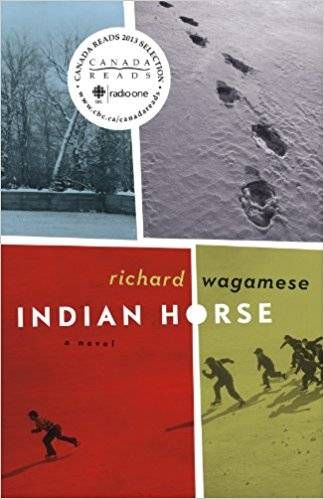
Indian Horse by Richard Wagamese
This is probably the most well-known account of residential schools; it was adapted into a movie in 2017 and is often taught in Canadian high schools. We meet Saul as an adult, while he’s in a treatment centre for alcoholics. In order to to heal, he retraces his life back to his time at a Manitoba residential school. Like Saskamoose, he found refuge in hockey, training endlessly to to compete on the school’s team. He is a star athlete, but the racism of Canadian society, including in hockey, stifles his dream. This includes description of the abuse he faced, including sexual abuse.
Porcupines and China Dolls by Robert Alexie
James and Jake have been friends their entire lives. In the Northwest Territories, they spend their days drinking and looking for meaningless sex — running from and numbing the pain they hide from even each other. They both went to the same mission school, but they each have secrets of what happened to them there. When a friend dies by suicide and a priest from the school appears on television, though, they’re forced to confront their past in order to move forward. This is told in a style similar to oral storytelling, using repetition and hyperbole for emphasis.
Kiss of the Fur Queen by Tomson Highway
Champion and Ooneemeetoo Okimasis are brothers who are taken from their family to go to a school that robs them of their language and even names. There, they are abused by priests. When they are free of the school, the Okimasis brothers struggle to find where they fit in — but they are watched over by the Fur Queen, a shape-shifting trickster figure who guides them towards the life of dance, music, and art that they are meant for. In addition to the trauma of residential school, Kiss of the Fur Queen also deals with the 1980s AIDS epidemic. It incorporates fabulist elements into this story, inspired by his own and his brother’s lives.
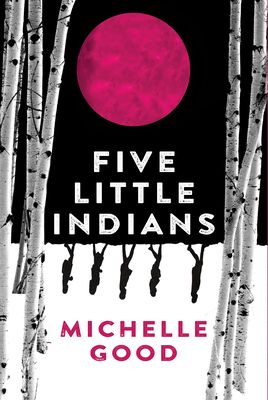
Five Little Indians by Michelle Good
Michelle Good wrote this book in response to the question, “Why can’t Indigenous people just get over residential schools?” She says, “The answer isn’t in the horror of the abuse. The answer is in how that continues to play out, both with the survivor directly and intergenerationally and at a community level.” Five Little Indians follows five residential school survivors in Vancouver, struggling to survive. They each try to find their own way, including in the American Indian movement or through motherhood. Good draws on her mother’s accounts of residential school and the aftermath in telling this story.
Celia’s Song by Lee Maracle
This is a complex narrative spanning generations and stretching across the physical and spiritual worlds. Mink is a shapeshifter who narrates the tale, bearing witness to Celia and her family’s story. Celia is a seer who is trying to heal her community with the assistance of her family. A two-headed serpent, Restless and Loyal, causes devastation when the dead are not properly honoured — and this affects Amos, a residential school survivor, most of all. This is told in a non-linear style, and it can be a challenging read, but it’s masterfully done.
“Dreamborn” by Kylie Ariel Bemis, from Maiden, Mother, Crone: Fantastical Trans Femmes Edited by Gwen Benaway
I regret that in my time as an English teacher, I didn’t get to teach this story. It is the only SFF story on this list; it’s an allegorical story of humans as a colonizing force, and it takes place a facility with a lot of similarities to residential school. The main characters have dream magic that allow them to organize an act of resistance — I won’t spoil it, but it’s a cathartic reading experience.
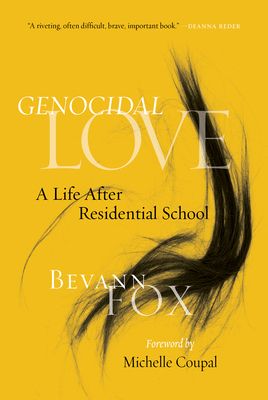
Genocidal Love: A Life after Residential School by Bevann Fox
This is a fictionalized account of the author’s experiences in residential school. It focuses on the long-term effects of the abuse inflicted by these institutions, and describes how the process of trying to apply for compensation was in itself a traumatizing experience. She traces how the abuse, including sexual abuse, that she suffered at residential school affects each of the relationships of her life, past and present.
Poetry
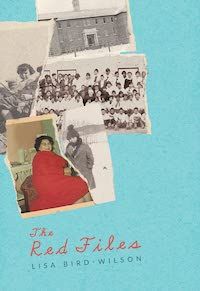
The Red Files by Lisa Bird-Wilson
Lisa Bird-Wilson uses family photographs and archival records (the federal government’s records of residential schools are divided into “black files” and “red files”) to write poems commemorating the generations of Indigenous children who were sent to residential schools, including her grandparents, aunts, and uncles. The poems also put these schools into context, including addressing the Sixties Scoop. Her response to the government’s attempt at an apology for residential schools is: “You sowed these seeds and you / apologize for having done this / thing that is still in the doing.”
Calling Down the Sky by Rosanna Deerchild
Rosanna Deerchild hosts CBC Radio’s Unreserved, a program that profiles Indigenous people in Canada, from activists to artists and more. In this collection, she explores the impact going to residential school had on her mother. In an interview, she discusses that she had never heard of Indian residential schools — never mind that her mother attended one — until a substitute teacher told her during roll call that he knew her mother from residential school. It would be years of slow, halting conversations with her closed-off mother until she got to hear this story from her.
Burning in this Midnight Dream by Louise Bernice Halfe
Louise Bernice Halfe was inspired to write these poems by watching the Truth and Reconciliation process unfold. In this collection, she describes how the residential school experience haunts her and previous generations of survivors, and how painful it is to face these memories head on: “This afternoon I have my hearing / For Truth and Reconciliation. / I must confess my years of sleeping / In those sterile, cold rooms where the hiss / Of water heaters were devils in the dark / I want to walk these thickets / To that far horizon and not look back.”
This is only a selection of books about residential schools. I invite you to do your own research, especially regarding local Indigenous communities. In addition to these titles, another place to start is listening to Historica Canada’s Residential Schools podcast series.
If you’re looking for ways to start conversations about residential schools with the kids in your life, try these Picture Books To Teach Children About Residential Schools.














